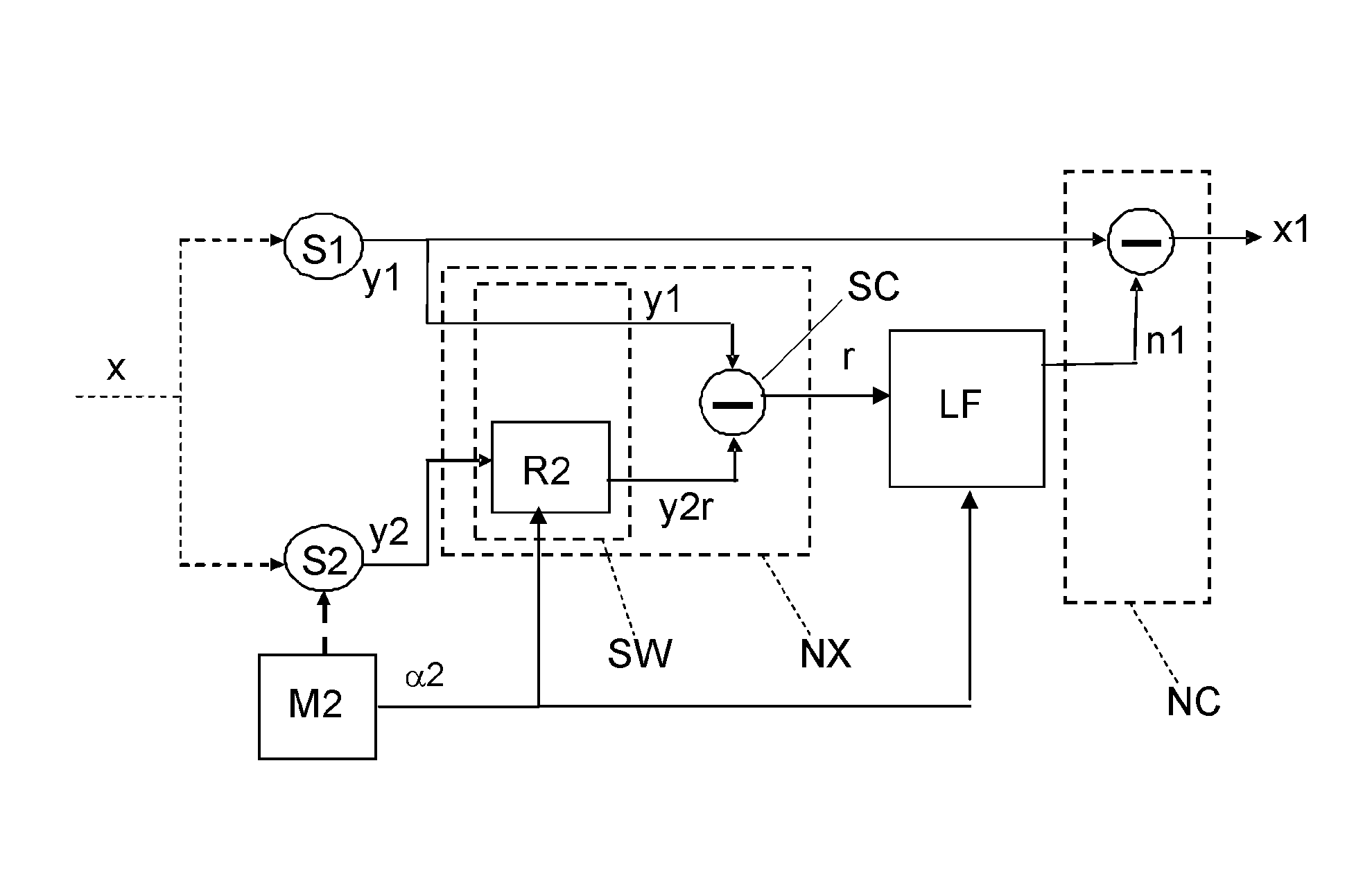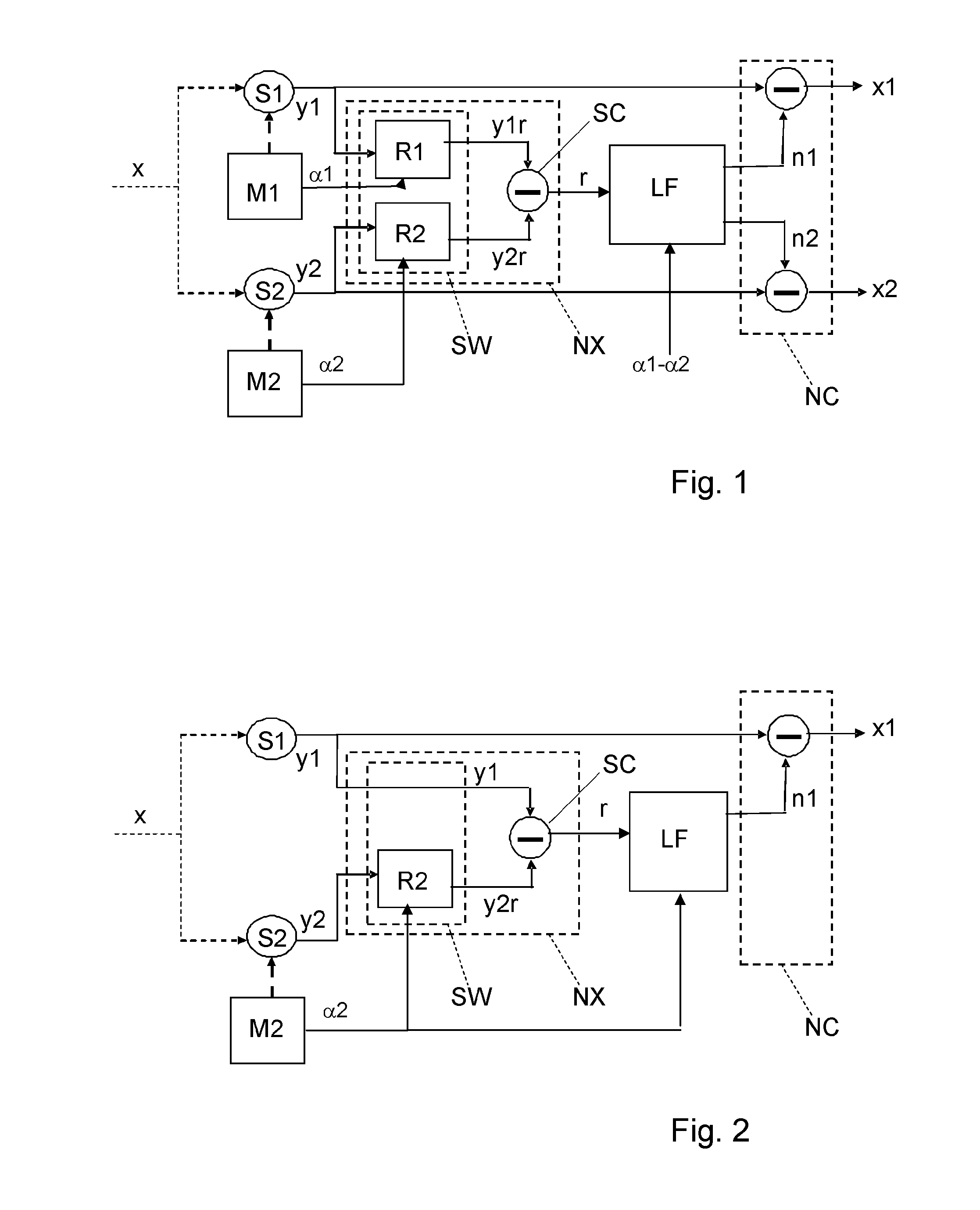Measurement Device and Method for Measuring
a measurement device and vectorial physical quantity technology, applied in the direction of acceleration measurement using interia force, speed measurement using gyroscopic effects, gyroscope/turn-sensitive devices, etc., can solve the problem of exponential time, drift in position indication, and inability to always have gps-navigation signals available, etc. problem, to achieve accurate estimation
- Summary
- Abstract
- Description
- Claims
- Application Information
AI Technical Summary
Benefits of technology
Problems solved by technology
Method used
Image
Examples
experiment 1
[0113]FIG. 8 shows the result of a first experiment. The experiment involves a full revolution of the sensor with a revolution time Tomw of 2 sec. The LF filter is a least squares with an integration time Tint=2 sec. FIG. 8 shows the frequency spectrum of the original uncorrected sensor signal y1 and the spectrum of the corrected signal x1. After correction, the spectrum is completely flat at (almost) the same level of the white noise in the upper frequency band. The method therefore nearly perfectly estimates and corrects the LF-noise.
experiment 2
[0114]In experiments 2, 3 and 4 the integration time Tint is a fraction of the rotation time Tomw as schematically shown in FIG. 10. FIG. 9 shows the result of the second experiment wherein the integration time is set to 1 sec, corresponding to Tomw / 2. The other parameters are the same as in experiment 1. A slight increase of the noise level below 1 Hz is observable. This is explained in that due to the decreased integration time, the LF-noise is only observed over the interval 0-180 degrees, resulting in a less optimal estimation.
experiment 3
[0115]FIG. 11 shows the result of a third experiment with Tint=0.5 sec. The other parameters are the same as in experiment 1. Again the noise level below 1 Hz has increased.
PUM
 Login to View More
Login to View More Abstract
Description
Claims
Application Information
 Login to View More
Login to View More - R&D
- Intellectual Property
- Life Sciences
- Materials
- Tech Scout
- Unparalleled Data Quality
- Higher Quality Content
- 60% Fewer Hallucinations
Browse by: Latest US Patents, China's latest patents, Technical Efficacy Thesaurus, Application Domain, Technology Topic, Popular Technical Reports.
© 2025 PatSnap. All rights reserved.Legal|Privacy policy|Modern Slavery Act Transparency Statement|Sitemap|About US| Contact US: help@patsnap.com



